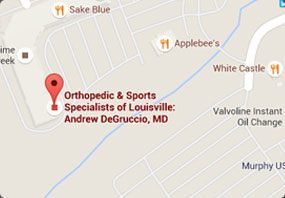Ankle Arthroscopy
Arthroscopy is a minimally invasive surgical procedure during which the internal structure of a joint is examined for diagnosis and treatment. Ankle Arthroscopy includes the diagnosis and treatment of ankle conditions. In an arthroscopic examination, a small incision is made in the patient’s skin through which a pencil-sized instrument with a small lens and lighting system (arthroscope) is passed. The arthroscope magnifies and illuminates the structures of the joint. It is attached to a monitor so that the interior of the joint can be clearly visible by your surgeon.
Arthroscopic examination of the ankle joint is helpful in diagnosis and treatment of various ankle disorders such as ankle arthritis, unstable ankle, footballer’s ankle, fracture, lateral ligament reconstruction, osteochondral defects of the talus, diseases of the synovium and undiagnosed ankle pain.
Procedure
During arthroscopic ankle surgery, either a general or local anesthesia will be given depending on the condition. A small incision the size of a buttonhole is made through which the arthroscope is inserted. Other accessory incisions will be made through which specially designed instruments are inserted. With the help of the arthroscope and surgical instruments, your surgeon repairs or corrects the problem. After the procedure is completed the arthroscope and other instruments are removed and incisions closed. You are instructed on how to care for the incisions, activities to be avoided and exercises to be performed for faster recovery.
Some of the possible complications after arthroscopy include infection, thrombophlebitis (clotting of blood in vein), excessive swelling, bleeding, blood vessel or nerve damage and instrument breakage.
Recovery
It may take several weeks for the puncture wounds to heal and the joint to recover completely. A rehabilitation program is advised for a speedy recovery of normal joint function. You can resume normal activities after consulting with your surgeon.







